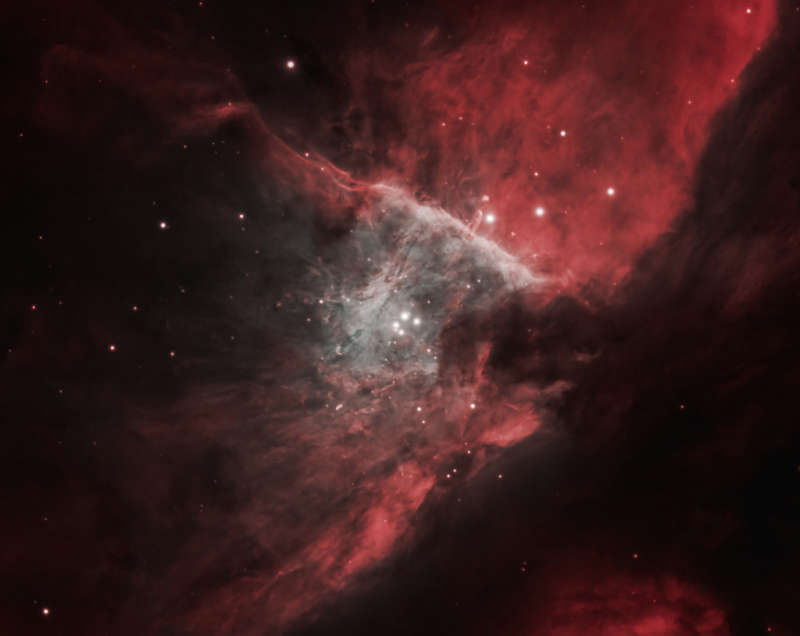Credit & Copyright: Fred Zimmer,
Telescope Live
Explanation:
Near the center of
this sharp cosmic portrait, at
the heart of the Orion Nebula,
are four hot, massive stars
known as
the Trapezium.
Gathered within a region about 1.5 light-years in radius,
they dominate the core of the dense Orion Nebula Star Cluster.
Ultraviolet
ionizing radiation from the
Trapezium stars,
mostly from the brightest star
Theta-1 Orionis C
powers the complex star forming region's entire visible glow.
About three million years old, the Orion Nebula Cluster was
even more compact in its younger years and a
dynamical study
indicates that
runaway
stellar collisions
at an earlier age may have formed a
black hole
with more than 100 times the mass of the Sun.
The presence of a
black hole within the cluster
could explain the observed high velocities of the
Trapezium stars.
The Orion Nebula's distance of some 1,500 light-years would make it one
of the
closest known
black holes
to planet Earth.
1999 2000 2001 2002 2003 2004 2005 2006 2007 2008 2009 2010 2011 2012 2013 2014 2015 2016 2017 2018 2019 2020 2021 2022 2023 2024 2025 |
Январь Февраль Март Апрель Май Июнь Июль Август Сентябрь Октябрь Ноябрь Декабрь |
NASA Web Site Statements, Warnings, and Disclaimers
NASA Official: Jay Norris. Specific rights apply.
A service of: LHEA at NASA / GSFC
& Michigan Tech. U.
|
Публикации с ключевыми словами:
M 42 - Orion Nebula - Трапеция Ориона - Туманность Ориона
Публикации со словами: M 42 - Orion Nebula - Трапеция Ориона - Туманность Ориона | |
См. также:
Все публикации на ту же тему >> | |
